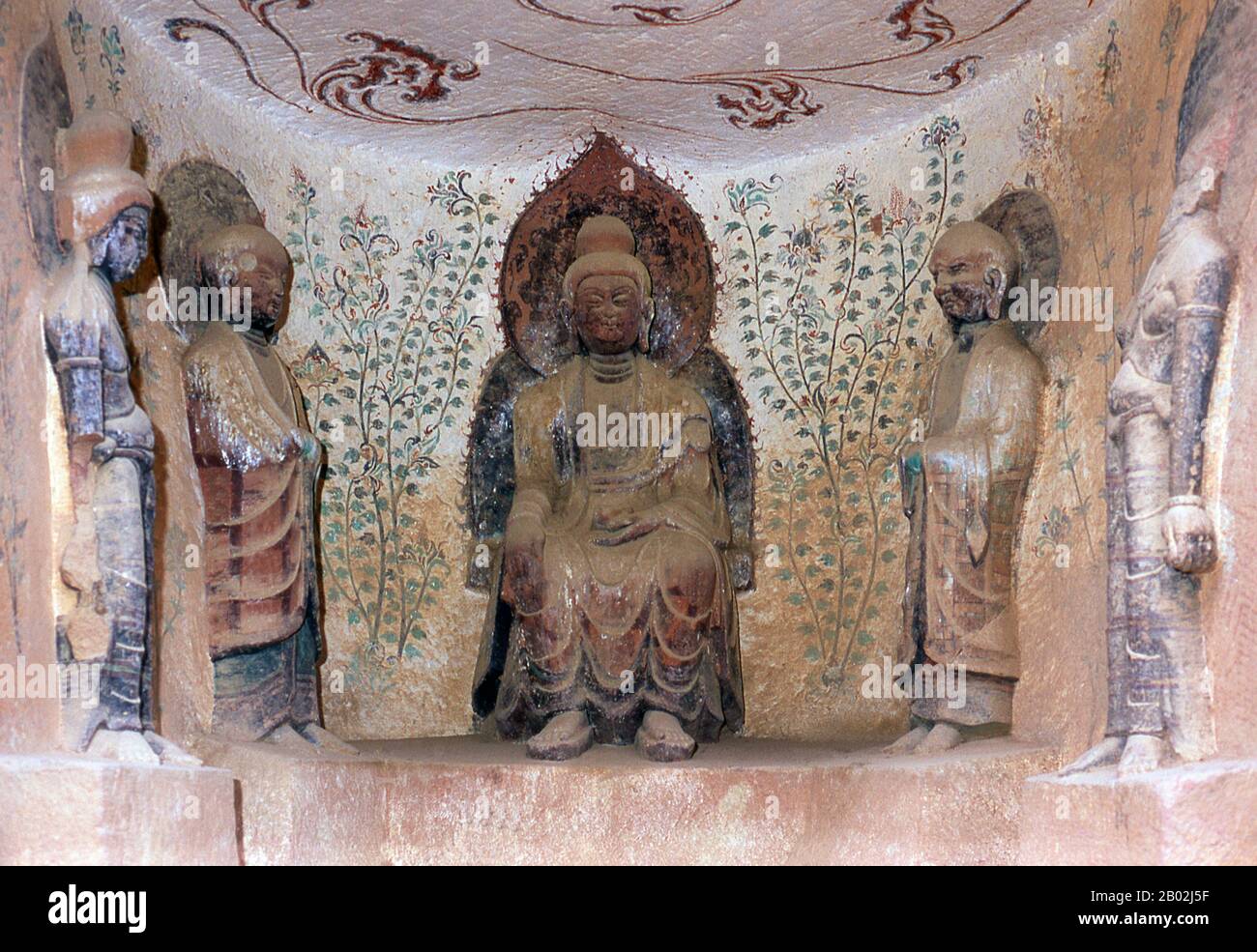Binglingsi Shiku (Thousand Buddha Caves) is a collection of caves and grottoes set in an inaccessible canyon by the Yellow River about 80km upstream from Lanzhou. The site's very isolation has protected and preserved Binglingsi, not least from marauding Red Guards during the Cultural Revolution (1966 - 76). The first Buddhist grottoes at Binglingsi date from the Eastern Jin Dynasty (c. 317 - 420 CE), and construction continued for well over a thousand years throughout the Tang, Song, Ming and Qing eras. The Bingling caves were often sponsored by wealthy patrons investing some of their Silk R

Image details
Contributor:
CPA Media Pte Ltd / Alamy Stock PhotoImage ID:
2B02J5FFile size:
50 MB (2.3 MB Compressed download)Releases:
Model - no | Property - noDo I need a release?Dimensions:
5035 x 3470 px | 42.6 x 29.4 cm | 16.8 x 11.6 inches | 300dpiDate taken:
21 July 2014Photographer:
Pictures From HistoryMore information:
This image could have imperfections as it’s either historical or reportage.
Binglingsi Shiku (Thousand Buddha Caves) is a collection of caves and grottoes set in an inaccessible canyon by the Yellow River about 80km upstream from Lanzhou. The site's very isolation has protected and preserved Binglingsi, not least from marauding Red Guards during the Cultural Revolution (1966 - 76). The first Buddhist grottoes at Binglingsi date from the Eastern Jin Dynasty (c. 317 - 420 CE), and construction continued for well over a thousand years throughout the Tang, Song, Ming and Qing eras. The Bingling caves were often sponsored by wealthy patrons investing some of their Silk Road profits in accruing merit for this life and the next. A total of 183 caves, together with nearly 700 carved stone statues and 82 terracotta sculptures survive, many showing very clear evidence of South Asian Buddhist artistic influences – indeed, art experts agree that Binglingsi is a stylistic midpoint between the former monumental Buddhas of Bamiyan in Afghanistan, and grotto complexes further east within China at Datong and Longmen.